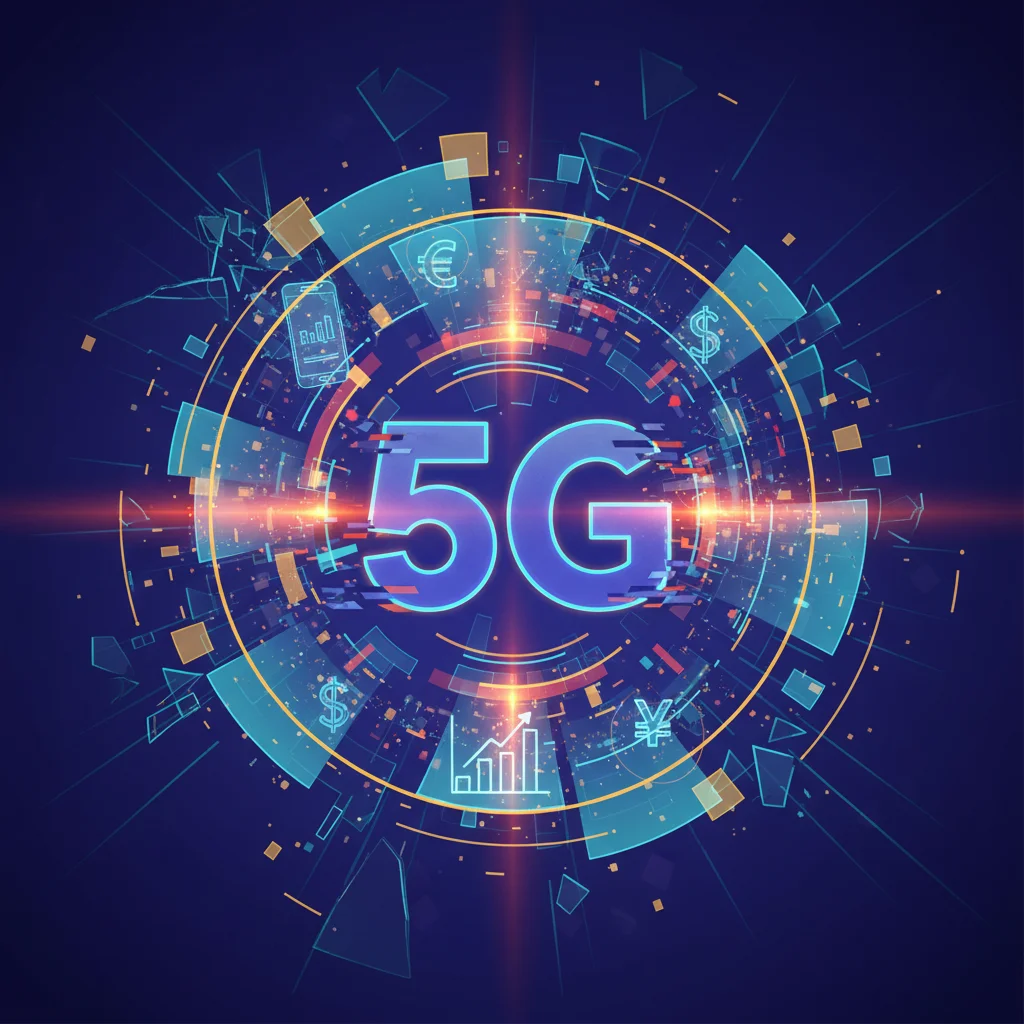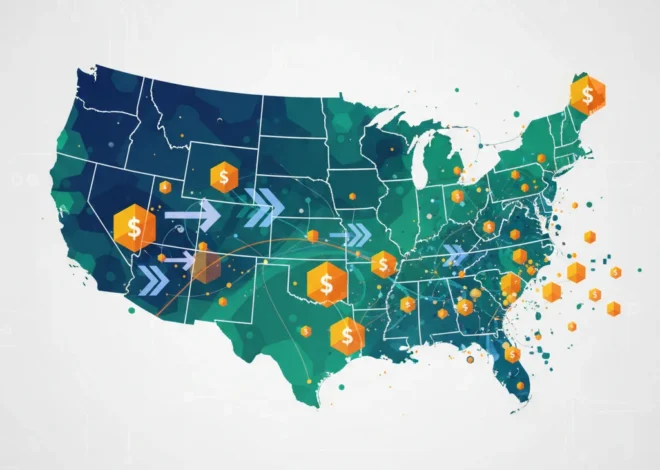
The 5G Illusion: Why Your Phone’s Signal is a Critical Indicator for the Economy and Your Portfolio
The Deception in Your Pocket: When 5G Isn’t Really 5G
You glance at your smartphone, and there it is: the reassuring “5G” symbol glowing in the corner. It’s a modern promise of instantaneous downloads, flawless streaming, and a connection to the future. But what if that promise is, at least partially, a mirage? According to startling new research, for a staggering 40% of the time your device displays that coveted 5G icon, it’s actually operating on a 4G connection. This isn’t just a minor inconvenience for consumers; it’s a significant indicator of a chasm between marketing, technological reality, and the profound economic shifts that true 5G is supposed to unleash.
This discrepancy goes far beyond user experience. For investors, business leaders, and professionals in the finance and technology sectors, this “5G illusion” has far-reaching implications. It impacts everything from infrastructure investment and corporate strategy to the development of next-generation financial technology (fintech) and the very pace of our digital economy. Understanding why your phone might be misleading you is the first step to grasping the complex interplay between technology, capital, and future market opportunities.
Decoding the Signal: The Technical Reality Behind the Symbol
The core of the issue lies in the two primary modes of 5G deployment: Non-Standalone (NSA) and Standalone (SA). Think of this as the difference between a high-performance engine dropped into an old car frame versus a brand-new vehicle designed from the ground up.
- Non-Standalone (NSA) 5G: This is the most common form of 5G today. It’s an early-stage, transitional technology that uses the 5G radio network for faster speeds but still relies on the existing 4G core network for functions like connecting to servers and managing data sessions. When your phone is on an NSA network, it displays the “5G” symbol, but the 4G backbone means you aren’t getting the revolutionary low latency (or minimal delay) that is 5G’s true game-changer. This is the source of the discrepancy highlighted in the recent findings.
- Standalone (SA) 5G: This is “true” 5G. It uses a 5G radio network and a 5G core network. This end-to-end architecture is what unlocks the technology’s full potential: ultra-low latency, massive device connectivity, and network slicing (creating dedicated virtual networks for specific tasks).
The widespread use of NSA 5G is a pragmatic choice by carriers to deploy 5G faster and more economically by leveraging their existing 4G infrastructure. However, it creates the very situation where your phone is technically “camping” on a 5G signal but falling back to the 4G core to do the heavy lifting. The result is a performance gap that has significant consequences for the broader economy.
Beyond the Cobblestones: Why San Miguel de Allende is a New Frontier for Finance and Investment
The Economic Ripple Effect: Why a Symbol Impacts the Stock Market and Fintech
A simple icon on a screen may seem trivial, but it represents a delay in a multi-trillion-dollar technological revolution. For those in finance, investing, and business, this gap between perception and reality is a critical variable.
Infrastructure Investing and Capital Expenditure
The transition from NSA to a full SA 5G network requires immense capital investment. We’re talking billions of dollars for each carrier to build out new core networks, deploy more cell towers (especially for high-frequency mmWave 5G), and lay miles of fiber optic cable. The fact that 40% of “5G” connections are still reliant on 4G (source) signals that this investment cycle is still in its early to middle innings. For investors, this presents a nuanced opportunity. While telecom stocks may be the obvious play, the real growth may lie in the “picks and shovels” of this transition: companies that manufacture fiber optics, build cell towers, produce specialized semiconductors, and develop the software for SA core networks. The current state of 5G is a clear signal that the investment runway for these ancillary industries remains long.
The Fintech and High-Frequency Trading Conundrum
The world of financial technology, particularly in trading, is a game of microseconds. The promise of SA 5G’s ultra-low latency is a siren song for the stock market and trading firms. It could enable sophisticated algorithmic trading strategies to be executed from mobile devices, provide real-time data streams to financial advisors on the move, and power a new generation of decentralized finance (DeFi) applications that require instantaneous transaction verification. However, the unreliability of current 5G networks makes building latency-sensitive fintech applications a risky proposition. A trading algorithm that expects a 1-millisecond response but gets a 30-millisecond 4G-level response could lead to significant financial losses. The 5G illusion is a direct barrier to innovation in high-stakes financial technology.
Banking, Business Strategy, and the Future of Commerce
Beyond trading, the entire banking and business ecosystem is banking on true 5G. Imagine augmented reality applications for complex wealth management visualizations, or insurance agents using drones to assess damage in real-time with a flawless video stream. These applications are not feasible on the inconsistent networks of today. Businesses that are building their 5-year strategic plans around the promise of 5G must temper their expectations and account for the slower-than-marketed rollout of SA 5G. The current network reality directly impacts ROI calculations for any major technology project, from smart factories to automated logistics.
To clarify the stakes, here is a comparison of what is promised versus what is often delivered:
| Feature | Standalone (SA) 5G Promise | Non-Standalone (NSA) 5G Reality |
|---|---|---|
| Latency | Ultra-low (1-5 milliseconds) | Low, but 4G-dependent (20-40 milliseconds) |
| Core Network | 5G Core | 4G LTE Evolved Packet Core |
| Key Applications | Autonomous vehicles, remote surgery, real-time IoT, mobile AR/VR | Faster video streaming, quicker downloads (an enhanced 4G experience) |
| Impact on Fintech | Enables mobile high-frequency trading, real-time risk analysis | Faster mobile banking apps, but not suitable for latency-critical trading |
| Economic Impact | Enables new industries and trillions in GDP growth | Incremental improvements over 4G, limited transformative impact |
Navigating the Transition: A Guide for Investors and Leaders
Understanding this technological gap is key to making sound financial and strategic decisions. The path forward requires a clear-eyed assessment of the landscape.
For the Investor: Look Beyond the Obvious
The 5G investment thesis is not broken; it’s just more complex than buying stock in major carriers. Prudent investors should be asking:
- Who builds the core? Investigate companies that are developing the software and hardware for SA 5G core networks. This is a highly specialized and critical part of the puzzle.
- Who owns the towers and fiber? Real estate investment trusts (REITs) that own cell towers and companies that lay fiber optic cable are fundamental beneficiaries of the 5G buildout, regardless of which carrier wins the consumer race.
- Who powers the devices? The semiconductor companies designing the 5G modems and processors required for true SA 5G performance are another crucial layer of the ecosystem.
The current network performance is a lagging indicator; the smart money in the stock market is focused on the leading indicators of infrastructure contracts and technology patents that will define the next phase.
The Unseen Engine: Is America's Real Skilled Visa Strategy Hiding in Plain Sight?
For the Business Leader: Plan for Reality, Not Hype
For executives in banking, logistics, manufacturing, or any industry touched by digital transformation, the message is clear: trust, but verify. Do not architect mission-critical systems that depend on the theoretical sub-5-millisecond latency of 5G. Instead:
- Conduct Real-World Pilots: Before committing to a large-scale IoT or mobile-first strategy, run extensive tests on the actual network performance in your key operational areas.
- Demand Transparency: Work with carrier partners to understand their specific timelines for SA 5G deployment in your region. Make contractual decisions based on guaranteed service levels, not marketing materials.
- Adopt a Hybrid Approach: Develop systems that can function effectively on current “good enough” 5G/LTE networks while being architected to take full advantage of SA 5G capabilities when they become reliably available.
Conclusion: From Illusion to Economic Reality
The fact that the 5G symbol on our phones can’t always be trusted is more than a technological curiosity. It’s a potent symbol of a critical transition period in our global economy. The full promise of 5G—a promise that underpins the future of financial technology, autonomous systems, and the next industrial revolution—is still under construction. This gap between the marketing icon and the underlying network reality serves as a crucial reminder for anyone involved in finance, investing, or business leadership. It highlights the immense capital investment still required, the risks of building strategies on unproven infrastructure, and the massive opportunities for those who can identify and support the companies building the real 5G future. The signal in your pocket is telling a story not just about your connection speed, but about the true state of our digital economy and the foundational work that still needs to be done.
BHP's Paradox: Why the World's Biggest Miner is Bullish Amidst China's Economic Storm


